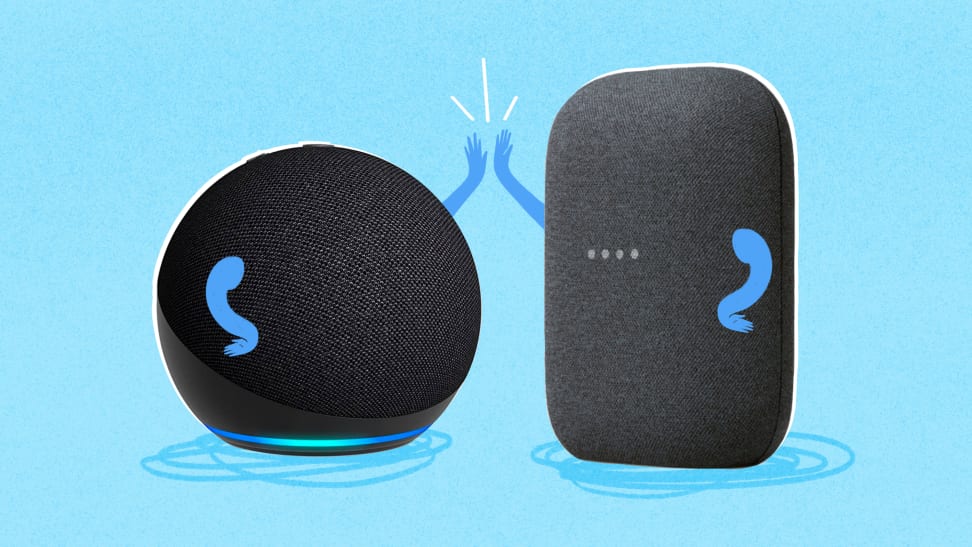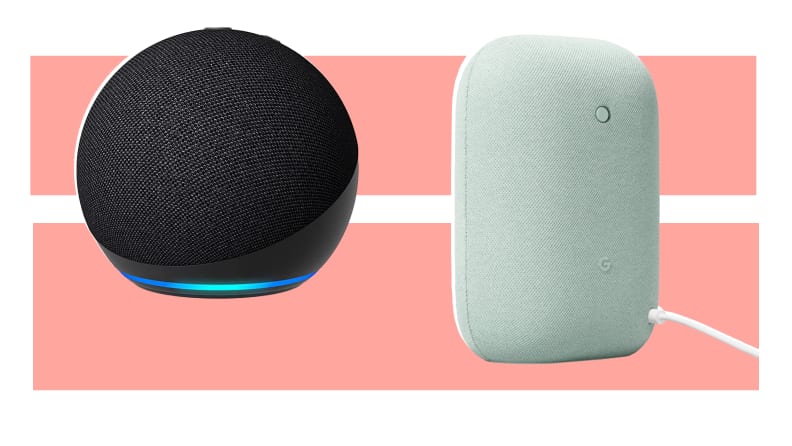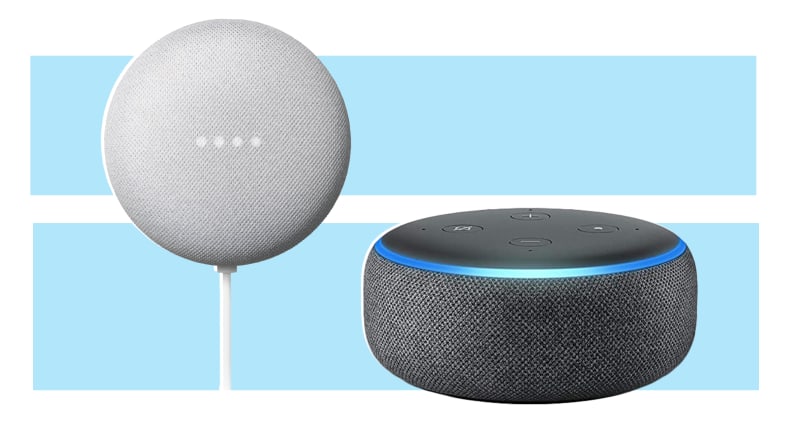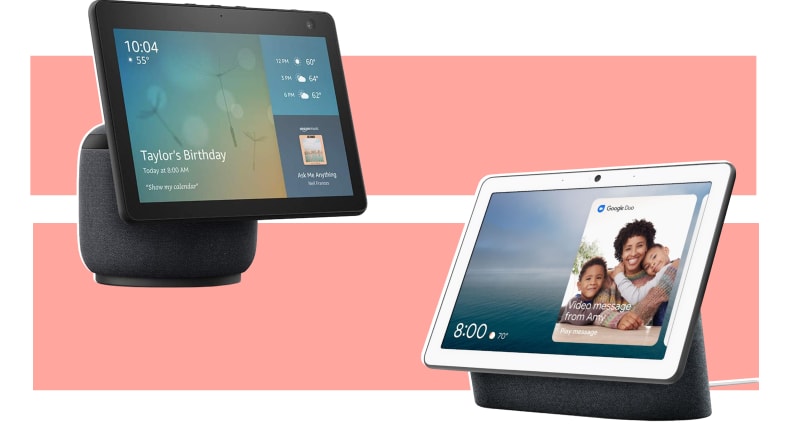Here's how Alexa and Google Assistant work together
The two can live harmoniously in your home with these easy tips
 Credit:
Reviewed / Amazon / Google
Credit:
Reviewed / Amazon / Google
Products are chosen independently by our editors. Purchases made through our links may earn us a commission.
The smart home has traditionally been pretty fragmented, and while much of that is getting better with the advent of Matter, smart home controllers (like smart speakers) are still likely to exist pretty separately from controllers in other ecosystems.
Different smart speakers, with different digital assistants, also have their own different advantages and disadvantages. Deciding between the vast libraries of skills and abilities of the two biggest players, Alexa and Google, can be tricky.
But the good news is that you actually don't have to decide. You can comfortably live with both assistants under one roof. Here’s how.
How to use Alexa and Google at the same time

The fifth-gen Amazon Echo Dot (left) and the Google Nest Audio are two mid-range smart speakers that offer high-quality sound for the size.
You've got a Google Home smart speaker, like the Nest Audio, at one end of the living room and the best Echo speaker, the Amazon Echo Dot (5th gen) at the other. Which one is worth talking to all the time?
The answer is both. Alexa and Google offer plenty of connected home prowess, allowing each voice assistant to live in harmony under one roof.
For the most part, they’re both capable of answering the same questions, executing the same smart home commands, and performing the same tricks. This is precisely why it’s so hard to choose between the two.
You shouldn’t have any trouble using a Google-enabled smart speaker placed next to one of Amazon’s Echo speakers. You might find that one works better for some tasks than others, but the assistants should only react if you’re talking to them using their respective wake words (“Hey Google” and “Alexa”).
If you want to use both Google Assistant and Alexa to control your smart home, you can pair both of their respective apps with your third-party devices with nary an issue, so long as you plan on asking one assistant at a time for help.
The only time this won’t work is if you have a speaker acting as a hub for Zigbee-enabled devices. But, Zigbee is being phased out, and if you don’t already have any Zigbee devices, you should probably avoid buying any. Instead, buy Matter-enabled devices.
Going forward, this should be even easier. Matter is starting to roll out, and it will allow most smart home devices to be compatible with each other.
In other words, you’ll be able to use both Google Assistant and Alexa to control the same smart home devices in your home, as long as they support Matter.
Decide which voice assistant belongs where

The Google Nest Mini and the Amazon Echo Dot (third-gen) are two of the smallest smart speakers currently available for purchase.
If you happen to be in a situation where you’re currently living with Google Assistant and Alexa, take a second to survey which assistant’s answers you prefer with oft-used commands and which device fits best into your particular usage scenario.
For instance, you might find the Nest Mini is a better smart speaker to have in the kitchen area because it's got great sound quality for a small speaker and faster response times from Google Assistant that's discernible over the sizzle of the stove. $35 at Walmart
Alternatively, the Amazon Echo Dot (5th gen) might perform better in the common areas where homework is done since the speaker delivers noticeably low-quality audio playback (though is much improved over previous generations of Echo Dot speakers).
A video-enabled smart display like Amazon’s Echo Show 8 or Google’s Nest Hub Max should be placed where it will get the most use and be accessible to anyone who wants to use the video calling feature, stream content from YouTube TV and Prime Video, watch recipe videos, and more. We think either smart display works best in the kitchen.
On the other hand, a larger speaker like the Amazon Echo Studio is better suited for big spaces like the living room or playroom where dancing and grooving take place, since it’s got a big sound.
What about Matter?
We’ve mentioned Matter a few times, but it’s worth continuing to talk about—as it will radically change the smart home landscape. That’s because Matter is a standard that all the major smart home companies have been working on together, allowing all Matter-enabled devices to work with both Google Assistant and Alexa, along with other ecosystems.
Now, it’s important to explain the classes of Matter products. Matter requires both controllers, and devices. Controllers, like smart speakers, can manage all of your Matter devices, and those devices can report its statuses back to your controllers.
But that doesn’t mean that controllers will necessarily work better together. You won’t be able to use your Google Nest speaker to control your Echo, as cool as that would be.
Keep that in mind as you build out your Matter-enabled home.
Maintaining your smart home setup with Alexa and Google

The Amazon Echo Show 10 (left) and the Google Nest Hub Max (right) are two of the best smart displays.
The best way to live peacefully with both Google Assistant and Alexa under one roof is to keep track of what you’re setting up as you’re doing it.
IFTTT is great for setting up straightforward smart home automation, but it can complicate things further if you have too many formulas set up that effectively perform the same action.
As with any smart home, if you have a ton of connected stuff set up inside your dwellings, make sure to keep all of your devices updated to ensure each voice assistant maintains a level playing field.


